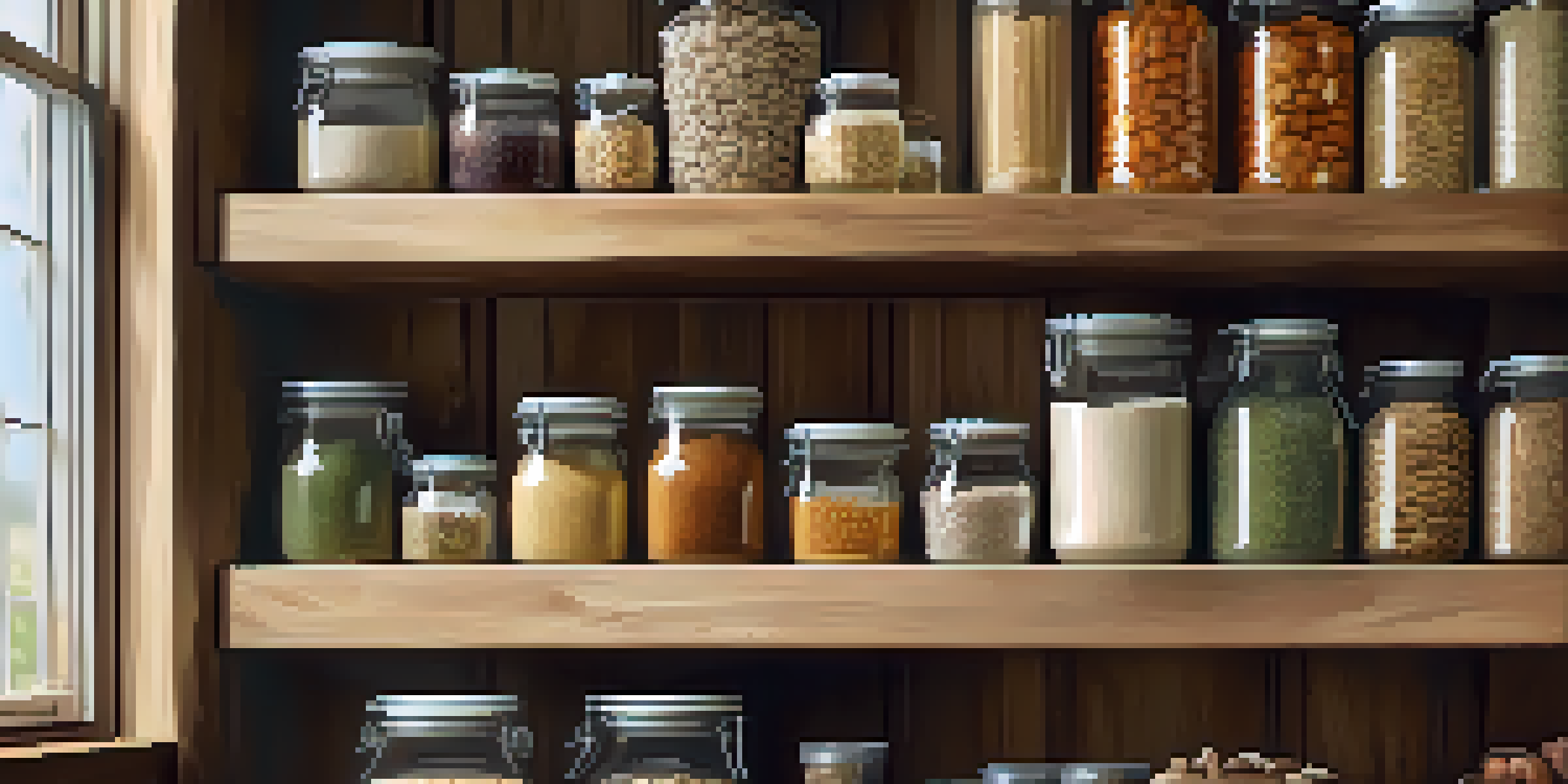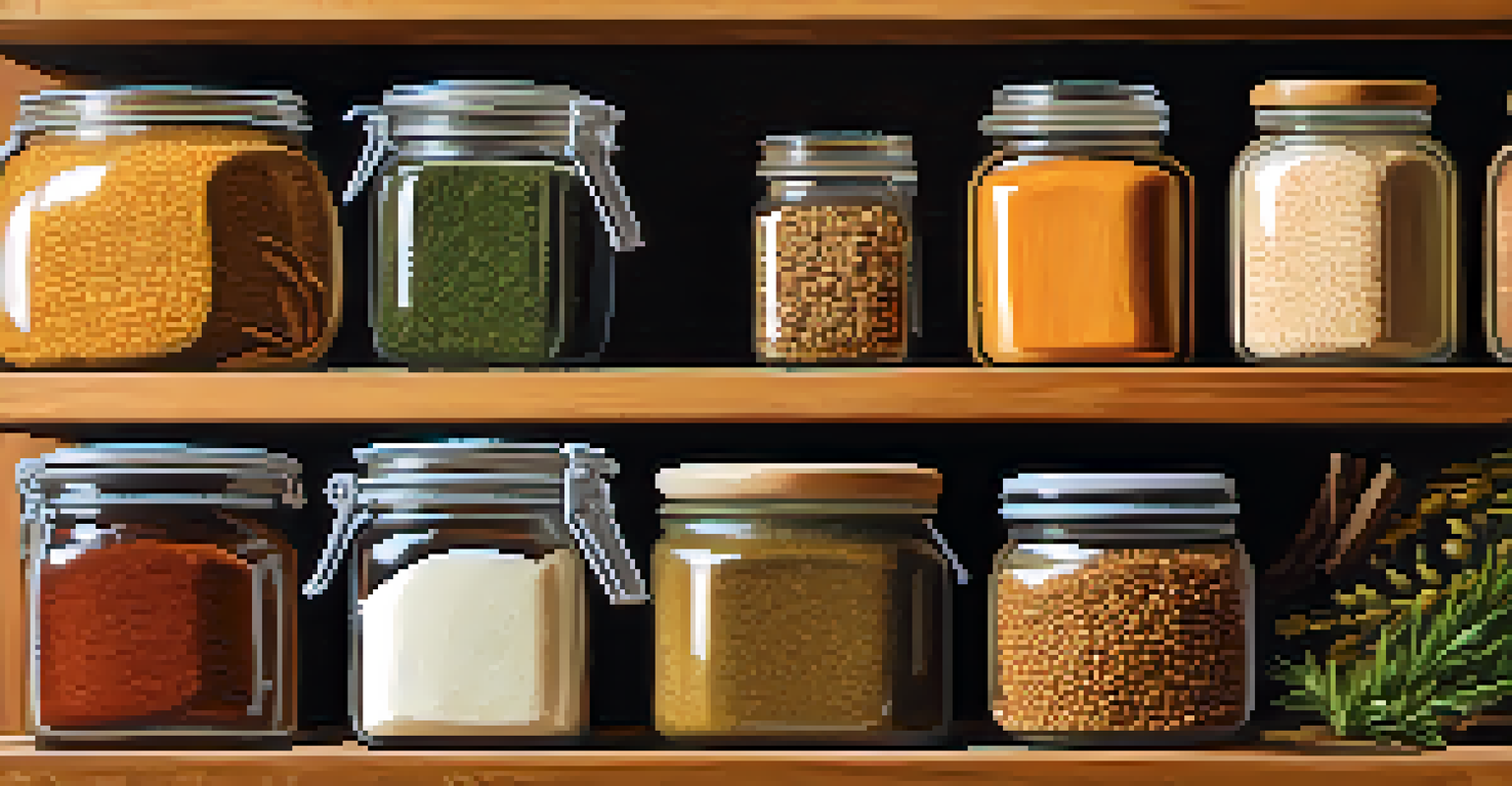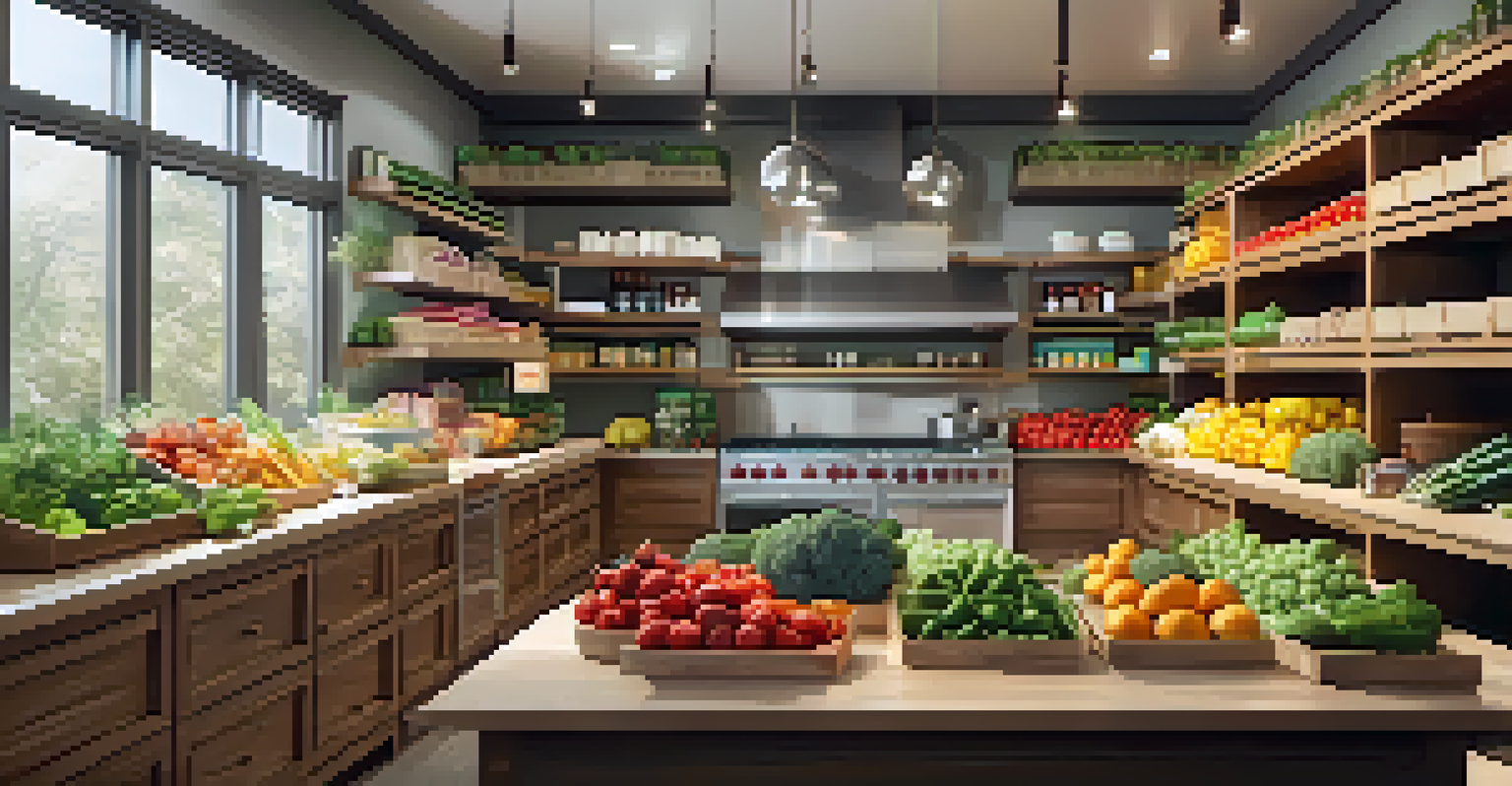How to Organize Your Raw Food Pantry for Easy Access

Start with a Clean Slate: Empty and Assess Your Pantry
Before diving into organization, it's essential to start with a clean slate. Empty your pantry completely to see what you have. This step helps you assess your inventory, including expired items that need to be discarded.
The secret of getting ahead is getting started.
As you clear out your pantry, take note of the raw foods you use most frequently. This will guide your organization efforts, ensuring that your most-used items are easily accessible.
Once your pantry is empty, give it a good clean. Wipe down shelves, check for pests, and ensure that the space is ready for your carefully organized raw food items.
Categorize Your Raw Foods for Simple Navigation
Grouping similar items together can significantly simplify your cooking process. Consider categories like grains, nuts, dried fruits, and spices. This way, you won't have to rummage through everything to find what you need.

Think about how you typically cook or what meals you prepare most often. By placing like items together, you create a natural flow that matches your cooking style, making meal prep feel less daunting.
Start Fresh by Cleaning Your Pantry
Emptying and cleaning your pantry is vital for assessing inventory and preparing for effective organization.
Labeling shelves or bins can also enhance this organization. Clear labels help everyone in the household know where items belong, fostering a collaborative cooking environment.
Utilize Clear Containers for Visibility and Freshness
Investing in clear containers can be a game changer for your pantry. These containers allow you to see what you have at a glance, reducing the chances of forgetting about ingredients tucked away in opaque packages.
Organization isn't about perfection; it's about efficiency, reducing stress, and clutter, saving time and money, and improving your overall quality of life.
Moreover, clear containers can help keep your raw foods fresh longer. Airtight seals prevent moisture and pests, ensuring that your pantry staples stay in top condition.
When choosing containers, consider various sizes to accommodate different types of food. For instance, larger containers for grains and smaller ones for spices can help maintain an organized and visually appealing pantry.
Implement a First-In, First-Out System for Freshness
Using a First-In, First-Out (FIFO) system is crucial for maintaining the freshness of your raw food items. This method ensures that older items are used before newer ones, minimizing food waste.
To implement FIFO, place newer items behind older ones on the shelf. This simple adjustment can make a significant difference in how quickly you use up your pantry supplies.
Organize for Easy Access and Use
Categorizing foods and arranging them by frequency of use streamlines cooking and minimizes meal prep time.
Regularly check your pantry to keep track of which items need to be used soon. This habit not only helps you maintain freshness but also encourages creativity in your meal planning.
Organize by Frequency of Use for Maximum Efficiency
Consider how often you use each item when organizing your pantry. Place the most frequently used ingredients at eye level or in easy-to-reach areas, making them more accessible during cooking.
Less frequently used items can be stored higher up or in the back. This way, you’re not constantly shifting things around to get to the ingredients you use daily.
This approach not only saves time but also helps you develop a more intuitive cooking routine, allowing you to whip up meals with confidence.
Incorporate Seasonal and Specialty Ingredients Wisely
As you organize your pantry, don’t forget about seasonal and specialty ingredients. These can often be tucked away, leading to forgotten foods that go to waste.
Create a dedicated space for these items, perhaps in a separate bin or shelf. This makes it easier to locate them when you're inspired to try a new recipe or dish.
Regular Maintenance Ensures Freshness
Scheduling regular check-ins helps maintain organization, ensuring your pantry remains functional and minimizes waste.
By keeping seasonal ingredients visible, you’re more likely to incorporate them into your meals at the right time, embracing the freshness that comes with seasonal eating.
Maintain Your Organization with Regular Check-Ins
Once you’ve organized your raw food pantry, it’s essential to maintain that order. Schedule regular check-ins, perhaps monthly, to reassess your inventory and organization.
During these check-ins, you can restock items that are running low, remove expired foods, and adjust your organization based on any new items you've added.

This proactive approach helps you stay on top of your pantry’s condition, ensuring that it remains a functional space for your culinary adventures.
Enjoy the Benefits of an Organized Raw Food Pantry
An organized raw food pantry not only enhances your cooking experience but also promotes healthier eating habits. With everything in its place, you’re more likely to experiment with new recipes and ingredients.
Additionally, the time saved from not searching through clutter can lead to more enjoyable meal prep, turning cooking into a creative outlet rather than a chore.
Ultimately, a well-organized pantry fosters a sense of peace and inspiration in the kitchen, making it a joyful space to explore your culinary passions.